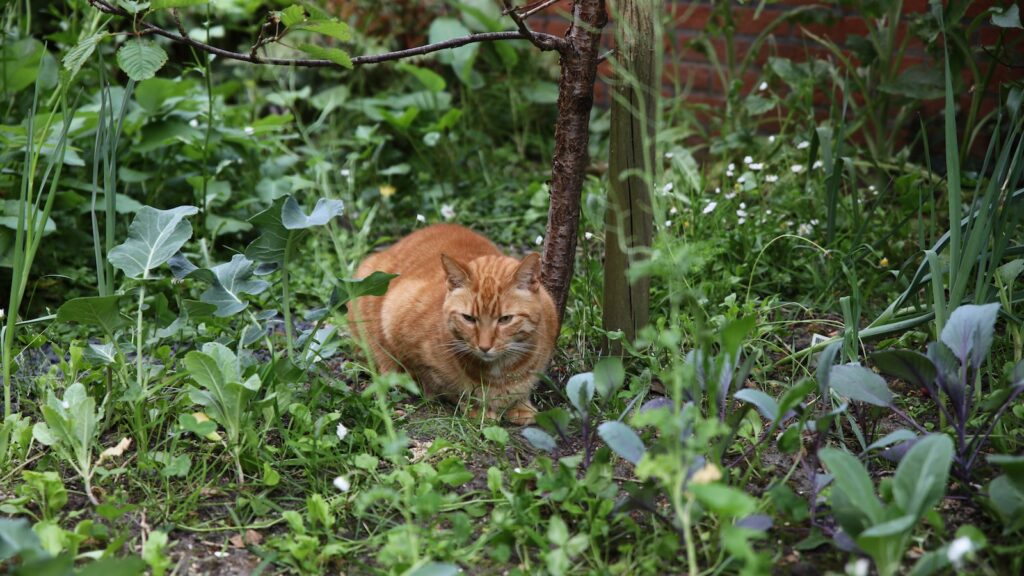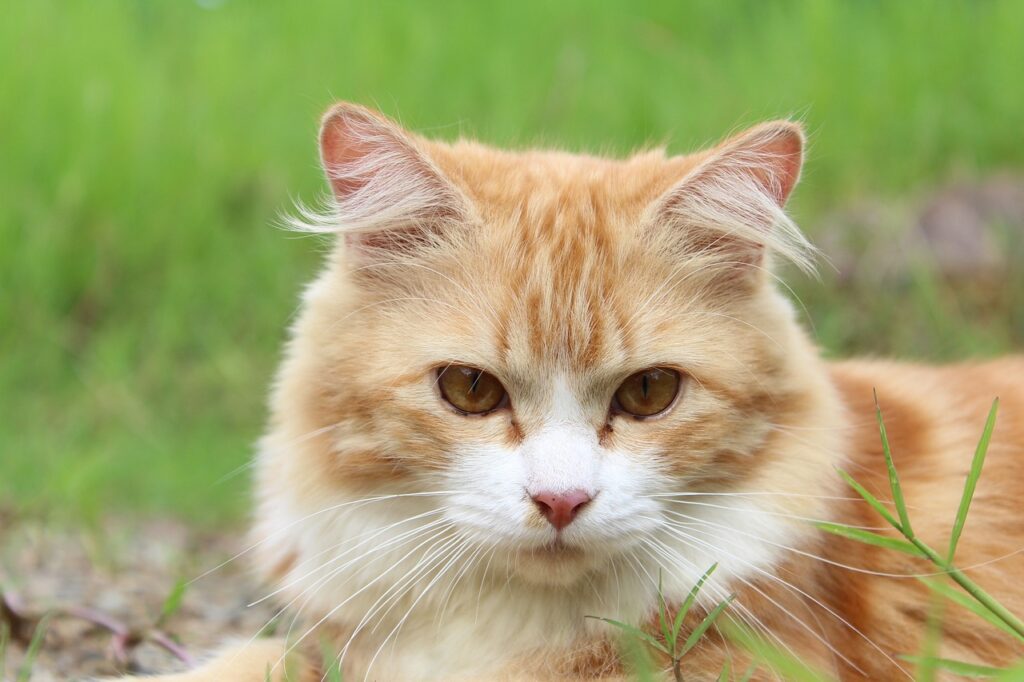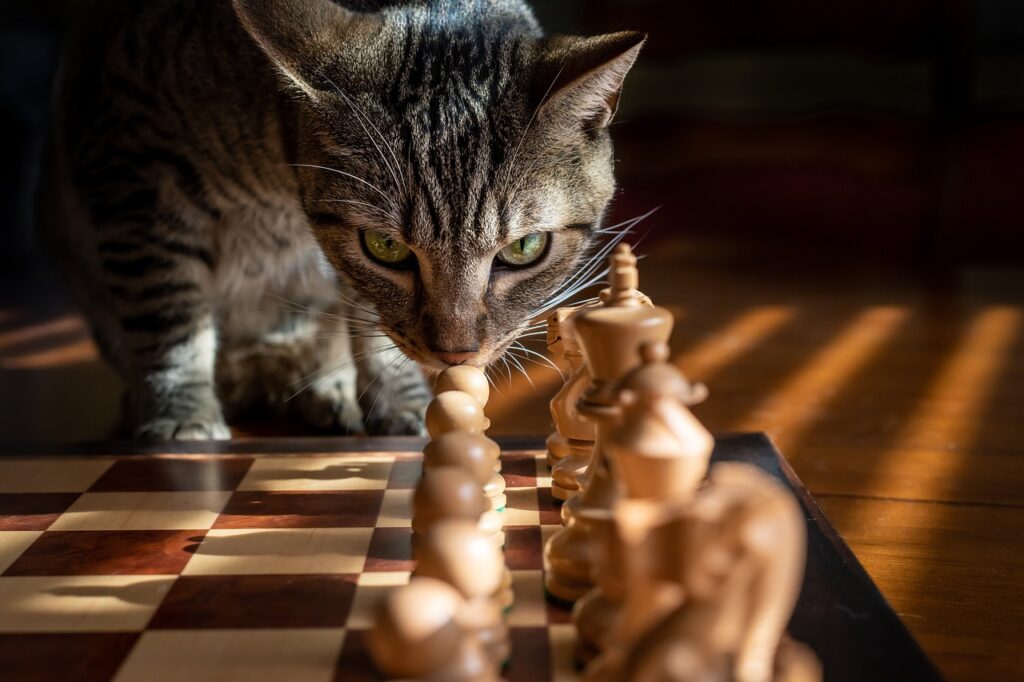Introduction: The Green Dilemma
Imagine a serene living room, bathed in sunlight, decorated with lush, vibrant
indoor plants, and a cat, stretching luxuriously under the sun’s glow. It
sounds picturesque, doesn’t it? However, the reality can be much different.
For many people, combining indoor plants with cats is a love story waiting to
unfold. For others, it’s a tragedy in the making. But rest assured, with the
right knowledge and choices, your living space can be a haven for both plants
and cats alike.
The Cat-Plant Relationship
The first thing to understand is the age-old connection between felines and
foliage. Cats, just like their wild counterparts, are innately drawn to
nature. Whether it’s the rustling of leaves, the swaying of a branch, or the
earthy aroma, plants provide sensory delight for our curious feline
companions.
Why Cats Love Plants
Cats are naturally curious creatures, constantly exploring their surroundings.
This deep-rooted trait can be traced back to their wild ancestors, who had to
navigate complex terrains for survival. Plants, with their varied textures,
colors, and scents, are a sensory playground for cats. Whether it’s the moving
shadow of a leaf or the tickling sensation of a stem, these creatures can’t
help but be captivated.
When Plants Fight Back
Evolution is a fascinating thing. While cats have evolved as hunters and
explorers, plants have developed their own mechanisms to deter herbivores,
including cats. Some plants secrete substances that are bitter or irritating
to the taste, while others go a step further by producing toxins that can be
harmful or even deadly to animals that dare to nibble on them. This defense
mechanism is nature’s way of ensuring the plant’s survival.
Signs of Plant Toxicity in Cats
As a cat owner, it’s crucial to recognize the symptoms that indicate your cat
may have ingested a toxic plant. Look out for excessive drooling, vomiting,
diarrhea, difficulty breathing, or a change in their behavior like lethargy or
sudden agitation. In more severe cases, a cat may suffer from tremors or
seizures. Being aware of these red flags can make all the difference in
ensuring your pet’s safety.
A Safe Compromise
While it may seem daunting, there are ways to safely merge your love for
plants and cats. The key lies in educating oneself, making informed choices,
and cultivating an environment that prioritizes safety while satisfying the
needs of both your plants and your furry friend.
Top Cat-Friendly Plants
Ready to give your indoor space a green makeover without compromising your
cat’s health? Here’s a list of plants that won’t just enhance your décor but
will also get a nod of approval from your feline companion.
Ferns
Ferns, with their delicate, feather-like fronds, are a favorite among many
plant enthusiasts. Thankfully, the majority of fern varieties, such as the
Boston fern or the maidenhair fern, are non-toxic to cats. Their graceful
presence can uplift any space, and their cat-friendly nature makes them a
perfect addition to a pet-inclusive household.
Spider Plants
Don’t let the name deter you. Spider plants, with their arching leaves and
unique offspring that dangle like spiders on a web, are completely safe for
cats. They are resilient, adapt well to various lighting conditions, and can
become a delightful focal point in your living area.
Areca Palms
For those who dream of a tropical oasis, the Areca Palm is your best bet. This
majestic plant, with its feathered fronds, is not only aesthetically pleasing
but also purifies the air and, most importantly, poses no threat to cats. It’s
a win-win for all!
Money Tree
Popular folklore says that the Money Tree brings good fortune and prosperity.
While we can’t guarantee a shower of riches, what we can confirm is its safety
for cats. Its braided trunk and shiny leaves make it a stylish choice for
modern interiors.
Plants to Avoid
While there’s a myriad of cat-safe plants out there, it’s equally important to
recognize the ones that are potentially harmful to our feline friends. These
plants may be popular and attractive additions to households, but they can
pose severe threats to curious cats who may decide to take a nibble.
Lilies
Often associated with Easter and springtime, lilies are undeniably beautiful,
gracing homes with their elegance and fragrance. However, for cat owners,
they’re a serious concern. Even a small ingestion can lead to severe kidney
failure in cats. From the petals to the pollen, every part of the lily plant
is toxic to felines.
Pothos
Pothos, with its heart-shaped leaves and trailing vines, is a favorite among
indoor plant lovers due to its low maintenance requirements. Yet, it’s
essential to know that this plant contains calcium oxalate crystals, which,
when ingested by cats, can cause oral irritation, excessive drooling, and
difficulty swallowing.
ZZ Plant
Known for its glossy leaves and tolerance to low light conditions, the ZZ
Plant is a popular choice for many households. However, it’s another plant
that contains calcium oxalate crystals. If a cat chews on its leaves, it could
experience oral pain, drooling, and vomiting.
Rubber Plant
Its broad, shiny leaves can be tempting for a curious cat, but the Rubber
Plant’s sap can be irritating. When ingested, it can cause mouth and stomach
irritation, leading to drooling, vomiting, and diarrhea in cats.
Making Safe Choices
As cat parents, the safety and well-being of our feline companions are
paramount. When merging a love for greenery with a passion for pets, it’s
crucial to take preventive measures and ensure that the two can coexist
peacefully.
Research Before Purchase
Knowledge is power. Before adding a new plant to your collection, take the
time to research its safety concerning cats. Several databases and resources
online list plants based on their toxicity to pets. This small step can
prevent potential emergencies down the line.
Safe Plant Placement
If you’re unsure about a plant’s safety or simply want to take extra
precautions, consider placing them out of your cat’s reach. Hanging planters,
wall-mounted shelves, or tall plant stands can be effective ways to keep
plants away from inquisitive paws and whiskers.
Watch for Sneaky Nibblers
Cats, with their agile bodies and crafty nature, can sometimes access places
you’d least expect. Regularly inspect your plants for signs of nibbling or
damage. If you notice your cat showing undue interest in a particular plant,
it might be wise to relocate it.
Consult the Vet
If you’re ever uncertain about a plant’s safety or suspect your cat has
ingested something harmful, consult your veterinarian. They can offer
guidance, recommendations, and peace of mind when navigating the world of
plants and pets.
Safe and Stylish Tips
Seeking that perfect balance between aesthetics and safety? Designing a pet-friendly space doesn’t mean compromising on style. With a little creativity and insight, you can create an environment that is both safe for your cat and pleasing to the eye.
Use Decorative Plant Cages
Why not add a touch of vintage charm to your indoor garden with decorative plant cages? These cages, often made of wrought iron or other ornate materials, serve a dual purpose. They act as protective barriers, keeping your curious cats at bay, and they add an aesthetic appeal, making your plants look even more elegant. It’s a combination of style and functionality.
Embrace Faux Plants
If the thought of constantly monitoring your cat’s interaction with plants stresses you out, consider the world of faux plants. Today’s artificial plants are incredibly lifelike, requiring a close inspection to distinguish them from their living counterparts. They offer the beauty of greenery without any associated risks. Plus, they’re maintenance-free!
Group Safe Plants Together
Creating designated zones in your home can be both a decorative and practical strategy. Grouping several cat-safe plants together not only creates a lush, focal point in your space but also allows your feline friend to safely indulge their curiosity. This way, you can achieve a mini indoor jungle that’s both safe and stunning.
Label Plants with Tags
With an expanding plant collection, it can sometimes be challenging to remember which plants are cat-friendly and which are not. Using plant tags or markers can be an effective way to keep track. Write down the plant’s name and add a simple “cat-safe” or “not cat-safe” label. Not only does this help you identify plants at a glance, but it can also be beneficial for house guests or pet sitters who might be unfamiliar with your collection.
Conclusion: A Green Haven for All
Our homes are personal sanctuaries, reflecting our passions, tastes, and lifestyles. For many, this means merging a love for feline friends with an affinity for flora. And while it might seem like a challenging endeavor, with the right knowledge and resources, it’s entirely possible. It’s a journey of understanding, making informed choices, and sometimes a little trial and error. But the reward? A harmonious living space where your cat can roam freely, and you can enjoy the tranquility of your green haven. Because when your beloved cat is safe and content, basking in the glow of your indoor garden and purring away, you’re reminded of the simple joys and the profound bond between humans, pets, and nature.
FAQs
- Q: Are succulents safe for cats?
A: Succulents are a diverse group, and while some are perfectly safe for cats, others can be toxic. Always research the specific variety before bringing it into a cat-inhabited space. - Q: My cat ate a plant. What do I do?
A: First, don’t panic. Identify the plant and consult your veterinarian immediately, providing as much detail as possible about the plant and the amount ingested. - Q: How can I deter my cat from a plant?
A: Cats typically dislike citrus scents. Spraying a mild citrus solution around the plant or placing citrus peels nearby can deter them. Additionally, placing aluminum foil or double-sided tape around the base of the plant can act as a deterrent since cats dislike the texture. - Q: Are air plants safe for cats?
A: Most air plants are non-toxic to cats. However, it’s always a good idea to check specific species for safety. Also, remember that even non-toxic plants can cause gastrointestinal upset if ingested. - Q: Can plants and cats really coexist?
A: Absolutely! With careful planning, research, and a bit of creativity, you can cultivate a space that caters to both your green thumb and your feline friend.



